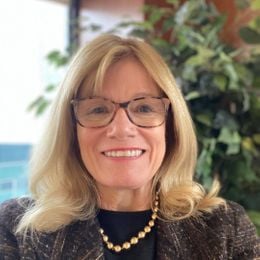What Workforce? A Rural Health Care Crisis
Worker shortages hurt access to care for older residents with complex needs

(Editor’s note: This content is provided by The John A. Hartford Foundation, a Next Avenue funder.)
When I was growing up in upstate New York, we would often camp and hike in the nearby Adirondack Mountains. While I recall those trips fondly, there was always the risk that in the event of an accident, someone would require a trip to a hospital, which would take more than an hour to reach.
In remote areas like these, the right specialist might be nowhere to be found — and I mean nowhere. Imagine what it was like if you need care quickly in the vast spaces of rural western America or the most remote regions of the Great Plains.
Fast forward to today, and the unbalanced supply and demand behind the rural health care workforce poses an even greater challenge. The Census Bureau (2010) reports that 20 percent of the U.S. population is rural, but only 12 percent of primary care physicians — and just 8 percent of specialists — are working in rural areas.
Those who live in small towns and the countryside continue to travel great distances for their care, and workforce shortages limit their access even further.
These issues are pronounced for older adults, especially those with complex health and social needs who rely the most on health care. Providers in remote areas are finding it increasingly difficult to recruit and retain primary and specialty physicians, nurse practitioners, nurses, nursing assistants and the array of support staff they need, which can affect the health of local populations.
Years after those Adirondacks camping trips, I found myself in the middle of this issue again — this time as a nurse in Nantucket, Mass., and one of a limited number of clinicians on the island. Concerns about immediate access to care — or classic supply and demand — were never far from anyone’s mind.
Bolstering the Geriatrics Workforce through Partnerships
The John A. Hartford Foundation is addressing workforce issues as a critical lever for making rural health care more age-friendly — better able to meet the needs of older adults and better equipped to support vibrancy as people age. We are identifying and spreading solutions so no matter where we live, we all receive high-value, evidence-based care as we get older — care that treats us with respect and dignity and meets our health goals and preferences.
Our long-standing partnerships are helping to better prepare the workforce for our aging population. Through the Eldercare Workforce Alliance, for example, we’re addressing recruitment, retention, training and compensation issues across the geriatrics workforce, especially in rural areas, and providing information and support to family caregivers. The Alliance has started state-based coalitions, such as in North Carolina, that aim to increase the number of providers that are specifically trained to care for older adults.
The federal Health Resources and Services Administration’s Geriatrics Workforce Enhancement Program is another partnership making gains. There are now 44 geriatric education centers — 30 of which serve rural areas — that train people who provide health care to older adults. A coordinating center we support at the American Geriatrics Society facilitates learning among these programs, offers resources on geriatrics education and provides mentorship from geriatrics experts.
How Innovations from Low to High-Tech Can Help
While we work at the federal level, we also need to learn from local and regional workforce innovations and bring them to scale. Technology can help. Nine of the rural Geriatric Workforce Enhancement Program sites are working together and separately to offer interdisciplinary team training to Indian country, in domains like dementia care. Many of them, such as the University of Rochester Medical Center, are using the ECHO telehealth model to break down geographic barriers.
Low-tech options are needed, too. Community volunteers who are trained to serve as health coaches can play a pivotal role in providing care in rural communities. In Oconee County, S.C., the Health Coaches for Hypertension program trained volunteers to lead educational classes to help attendees learn how to control their hypertension and offered personalized follow-up support. The percentage of participants who met the definition of “controlled hypertension” rose from roughly 40 percent to 51 percent over the course of the program.
A similar effort for people in the same county focused on diabetes, congestive heart failure or other heart disease also resulted in fewer readmissions to the hospital — and lower health care costs — compared to a control group.
We need to share learnings from these success stories so similar workforce innovations can be implemented in every corner of the country. We must demand that we have equal access and equal quality of health care regardless of where we live. Older adults deserve equitable, reliable care.


The John A. Hartford Foundation is a private, nonpartisan, national philanthropy dedicated to improving the care of older adults. The leader in the field of aging and health, the Foundation has three priority areas: creating age-friendly health systems, supporting family caregivers, and improving serious illness and end-of-life care.

